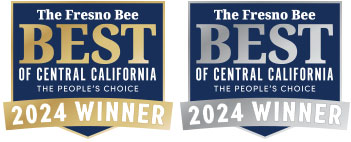By John Trupp
Richard Matoian, the Executive Director of the American Pistachio Growers was the guest speaker on March 8th, 2019. We started our session with an introduction of each individual member within our leadership group. The thing that I think was so important to the introduction was allowing Richard to get a quick glimpse of who each member is and plans to be. I also think one of the most important things took place in the introduction. We were immediately tasked with answering a simple, yet difficult question.
What does leadership mean to you? We had responses such as “someone who has the ability to lead others to a common goal” or “someone who brings value to the community”. Not one response was exactly alike which I think are extremely valuable to have within a group of leaders or future leaders. With this one question, we were able to see everyone’s individual understanding and expectations of a leader. I think I learned a valuable lesson from one simple, yet difficult question. I learned that not everyone shares the same thoughts about what it takes to be a leader but that everyone has their own interpretation of what it takes to lead.
Throughout the entire discussion, we mainly learned about pistachios, and for good reason. I learned that pistachios are indeed a very nutritious snack. Pistachios contain valuable nutrients such as fiber, potassium, and protein. One thing I learned that I think is an astounding fact is the fact that one serving of pistachios has the same amount of potassium as a medium-sized banana. So, if you exercise and do not like bananas as a form of snack to replenish the potassium you lose during exercise, pistachios are a suitable substitute.
Another lesson that I learned from Richard is the difference between trade associations and commodity boards. Trade associations are groups of growers that are allowed to be members of the association on a voluntary basis. Commodity Boards on the other hand, growers come together to vote these boards into place. Once these boards are in place, members are essentially forced to pay to be included in these boards. Being forced to pay for something may seem a little difficult to want around, but in doing so, it creates challenges for the Board itself.
Trade associations seem to be more practical in my opinion because members participate on a voluntary basis. This allows growers the freedom to come and go as they seem fit. A particular issue that I think arises from this is the potential for a grower to cause issues for a certain association, and then the grower disassociates themselves with that association, which would create issues for the association and the grower themselves.
Commodity Boards are equally as important in my opinion but face completely different issues. Every five years these boards HAVE to have a referendum vote. If your growers are unhappy with the way things are being ran within the board, you risk the chances of having the group being disbanded by vote, every five years. To me, this seems extremely fair especially if the direction of the Board does not match the views of its growers. Commodity Boards seem to be the way to go in my opinion. Though if things do not go the way you and your fellow growers feel they should go, the growers are allowed the freedom to vote to keep the board together or disband the board all together. The important thing to the referendum vote is the fact that each individual grower has the exact same voting power. This means that if you have a grower that has ten acres and a grower that has ten thousand acres, they have the same amount of voting power.
